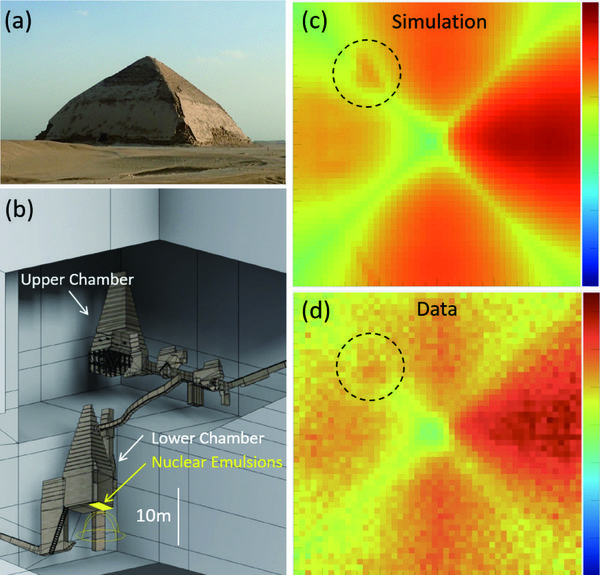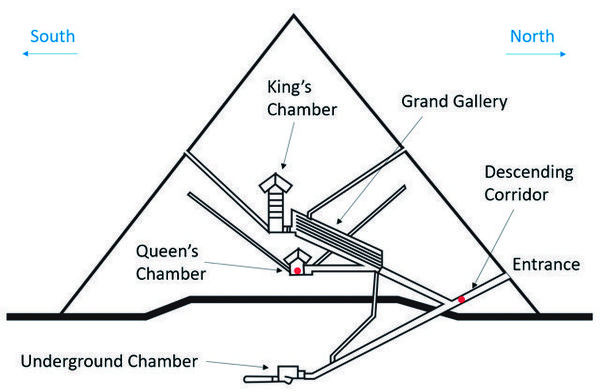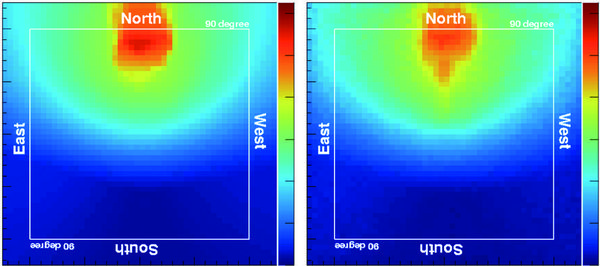Features
Features
Research of Egyptian Pyramids with Cosmic ray Imaging
- ツイート
- 2017/11/09
Institute of Materials and Systems for Sustainability / IAR
Designated Associate Professor Kunihiro Morishima
You can read the latest research of Dr. Morishima on the following page;
- Highlights: "Physicists at Nagoya University discover a huge void in Giza's Great Pyramid by cosmic-ray imaging" (November 22nd, 2017), NU Research
- news: "Cosmic-ray particles reveal secret chamber in Egypt's Great Pyramid", by Jo Marchant (November 2nd, 2017), Nature
- letter (research paper): "Discovery of a big void in Khufu's Pyramid by observation of cosmic-ray muons" (November 2nd, 2017), Nature
The following essay was published in March 2017, in IAR Letter.
Source: IAR Letter, vol.15, March 2017
*about IAR: Nagoya University's Institute for Advanced Research was established to produce internationally recognized academic research of the highest caliber, and to contribute to society through the research achievements at the Institute.
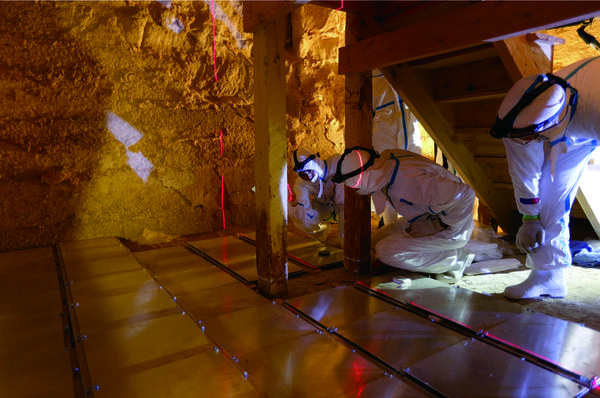 Installation of nuclear emulsion detectors inside the Bent Pyramid at the Dahshur necropolis in Egypt. Aluminum plates, which fix nuclear emulsions, were placed horizontally on the ground inside the lower chamber to measure cosmic rays to validate imaging of the upper chamber.
Installation of nuclear emulsion detectors inside the Bent Pyramid at the Dahshur necropolis in Egypt. Aluminum plates, which fix nuclear emulsions, were placed horizontally on the ground inside the lower chamber to measure cosmic rays to validate imaging of the upper chamber.
Egyptian pyramids built more than 4500 years ago still hold various mysteries. To take transmission images inside gigantic objects like a pyramid, we are developing Cosmic ray imaging technology with nuclear emulsions that can detect radiation emissions such as muons with very high accuracy. We have been measuring the Bent Pyramid at the Dahshur necropolis and the Khufu Pyramid at Giza in Egypt since 2015. We validated our methodology by performing the first imaging of the chamber inside the Bent Pyramid and found an anomaly behind the north entrance of the Khufu Pyramid.
INTRODUCTION
Pyramids are gigantic stone architecture, which were built by ancient Egyptians more than 4500 years ago. There are a lot of mysteries; "Who did build them?" "Why and how built?" These are still unknown. In order to solve the mysteries of Pyramids, various research missions with advanced non-destructive technologies were conducted in past 50 years; radar scan, micro-gravity meter, robot and so on. However, these technologies have not enough searching ability of depth, which can search up to several meters from these devices. Thus, if there are any hidden structures deeply inside Pyramid, it could not be found. And also, since they have not enough accurate imaging resolutions, its positions and shapes can't be clearly revealed if any anomalies are found.
Cosmic ray Imaging
X-ray imaging is a non-destructive imaging technology for viewing the human body or industrial materials with accurate imaging resolution. However, X-rays are not able to penetrate a pyramid because its penetration length is an order of meters in matter. Imaging using muons contained in cosmic rays can realize visualization deeply inside gigantic objects like pyramids. Cosmic rays are fundamental particles or nucleus, which are produced and accelerated by high energy astronomical phenomena in the universe like, for example, a supernova explosion. Interaction between cosmic rays and atoms in the atmosphere produce secondary particles including muons that have various energy levels. Muons have high penetration power in matter due to their physical properties, which depends on their energy; for instance, high energy muons are able to penetrate more than 1 km thick limestones. Through this property, if a hidden space inside a pyramid is present and muons pass through the space, then more muons are able to penetrate the pyramid than without the space. To take transmission images, directional sensitive detectors are needed because Cosmic ray muons are hitting the ground from every direction. Directional distribution of Cosmic ray muons measured by a detector shows an absorption effect while passing through matter and this can be converted into the density length, which is defined as the product of density and length along the pass, in each direction from the detector. Thus, the inner structure of a pyramid can be reconstructed.
Nuclear Emulsion
A nuclear emulsion is a photographic film used for detecting three-dimensional trajectories of radiation with sub-micrometric spatial resolution thanks to very small silver bromide crystals, which work as a sensor of radiation (1, 2, 3). It is thin, lightweight, and works without an electric power supply. These properties are suitable for Cosmic ray imaging. Therefore, we are developing advanced nuclear emulsions and its analyzing technologies for Cosmic ray imaging.
Scanpyramids
We are applying Cosmic ray imaging with nuclear emulsion technologies to the measurement of pyramids through participation in an international scientific research project called "ScanPyramids," which was organized mainly by Egypt's Ministry of Antiquities and started in October 2015. So far in this project, the Bent Pyramid at Dahshur and Khufu Pyramid at Giza have been measured.
Figure 1. (a) Image of the Bent Pyramid, (b) 3-D model of inner structures inside the Bent Pyramid, (c) Cosmic ray image by simulation, (d) Cosmic ray image from measurement data.
Measuring the Bent Pyramid
We measured the Bent Pyramid to validate our methodology from December 2015 to January 2016. Nuclear emulsions were produced in our laboratory at Nagoya University and sent to Cairo, Egypt. They were installed inside the lower chamber in the Bent Pyramid (Fig. 1 (a), (b)) , with the installation area covering 3m2 . The emulsions were collected and developed after 40 days in Cairo, and then analyzed at Nagoya University by a high speed automated scanning system called HTS. Through these measurements, we took Cosmic ray muon images and compared them with a simulation (Fig. 1 (c), (d)) . These images show that red means a large number of Cosmic ray muons and blue a small number in the two-dimensional angular space that shows the detected direction of Cosmic ray muons. The dashed circle in each image shows the direction of the upper chamber. Through this analysis, we validated our methodology by imaging the upper chamber from the lower chamber. This is the first validation of imaging of a chamber inside a pyramid of 100 m-thick limestone.
Measuring the Khufu Pyramid
We have been measuring the Khufu Pyramid since 2016. Nuclear emulsions were installed in the Descending Corridor extending from the main entrance and the Queen's Chamber (Fig. 2). We released our results from data from the Descending Corridor in 67 days (Fig. 3). It showed that there is a clear difference from the center to north side when comparing data versus simulation. This difference is over five sigmas, strongly suggesting one or several unknown voids behind the north face. We are measuring from additional positions in the Descending Corridor to clearly identify the shape and positons suggested by the anomaly and also analyzing the data collected from the Queen's Chamber.
Figure 2. North-south cross-section of the Khufu Pyramid. The two red points show the installation locations of the nuclear emulsions.
Figure 3. Cosmic ray images of the north face of the Khufu Pyramid from the Descending Corridor by (a) simulation, and from (b) measurement data.
Future Prospects
Cosmic ray imaging is a very powerful technology for not only archaeology as shown but also a wide variety of research fields: science, engineering, industry, infrastructure inspections, and more. In the near future, we plan to apply nuclear emulsion technology to various applications and realize Cosmic ray tomography, which is three-dimensional visualization from many two-dimensional images inside a gigantic object.
References
(1) Morishima K., & Nakano T., Development of a new automatic nuclear emulsion scanning system, S-UTS, with continuous 3D tomographic image read-out, Journal of Instrumentation 5, P04011 (2010).
(2) Morishima K., Hamada K., Komatani R., Nakano T., Kodama K., Development of Automated Nuclear Emulsion Analyzing System, Radiation Measurements 50, 237-240 (2013).
(3) Morishima K., Latest Developments in Nuclear Emulsion Technology. Physics Procedia 80, 19-24 (2015).
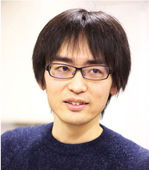 |
Kinihiro MORISHIMA: Designated Associate Professor of Young Leaders Cultivation Program Institute of Materials and Systems for Sustainability / Institute of Advanced Research, Nagoya University |
Related Links
- download IAR_letter_Morishima.pdf
- press release of Scan Pyramids Project on April 27th, 2016
- press release of Scan Pyramids Project on October 15th, 2016
- "Discovery of a big void in Khufu's Pyramid by observation of cosmic-ray muons", Nature, 2017, DOI:10.1038/nature24647
-
"Cosmic-ray particles reveal secret chamber in Egypt's Great Pyramid", Nature, 2017, DOI: 10.1038/nature.2017.22939
NU Research
(English)


